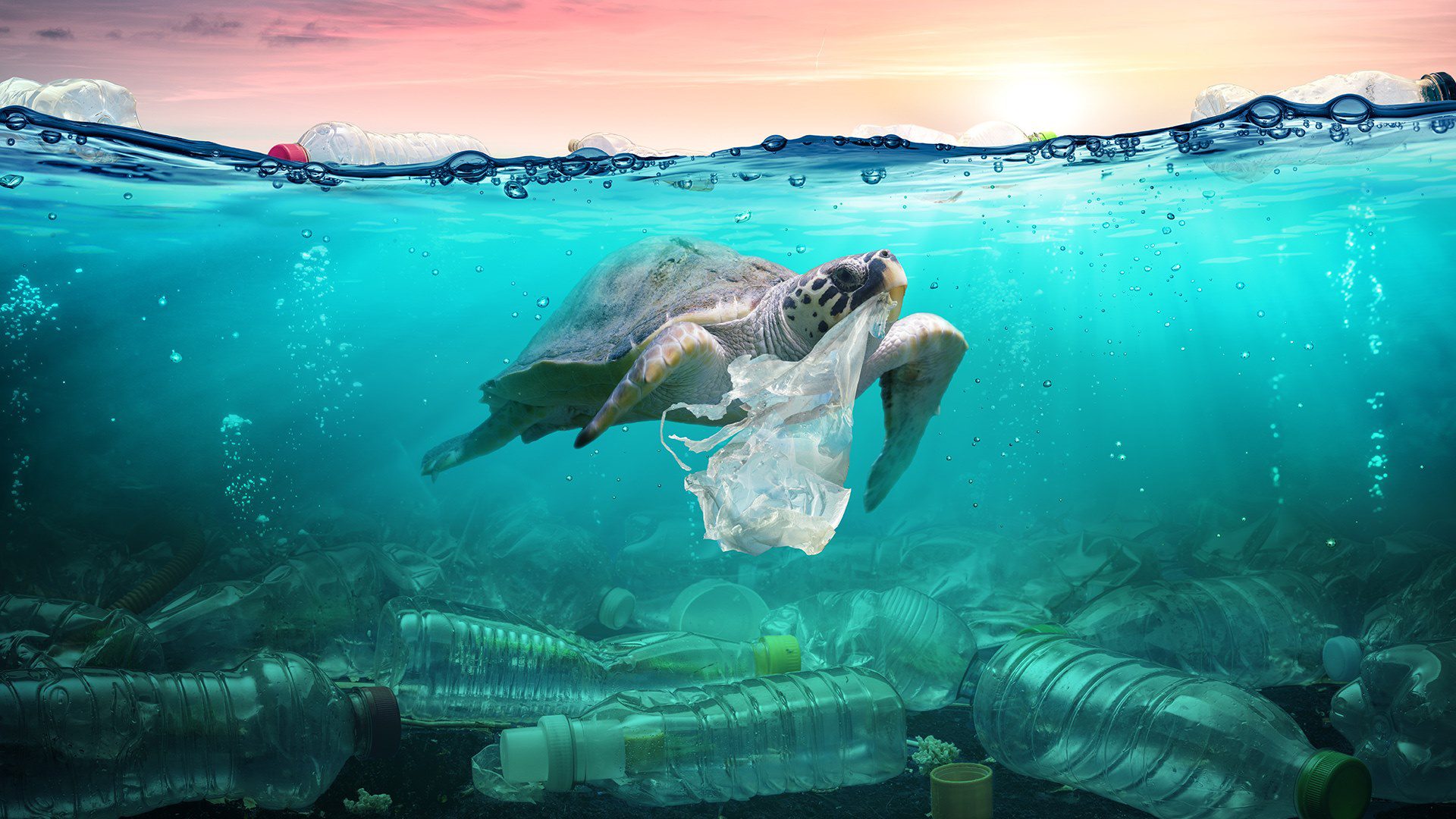Plastic is an incredibly versatile material and is present in virtually every aspect of modern life. From cigarette filters to car bumpers, to toys and food packaging, plastic is ubiquitous in our society. However, the production and overuse of this material comes at a significant environmental cost.
Worldwide, annual plastic production has increased dramatically in recent decades, reaching over 400 million metric tons. If this trend continues, production could reach 1.1 billion metric tons by 2050. Increased plastic production and use has significant implications for the environment, including an increase in greenhouse gas emissions and an impact devastating to marine life.
The negative effects of plastic on the environment and human health are growing concerns around the world. In developing countries, where waste management infrastructure is limited, plastic waste accumulates on beaches and rivers, harming ecosystems and sources of fresh water. But even in developed countries, where waste management systems are more advanced, the production and use of plastic has a devastating impact on the environment.
The chemical additives used in plastic production are derived from fossil fuels, and the production process itself emits pollutants that contribute to global warming. Furthermore, plastic is responsible for a significant portion of global greenhouse gas emissions. In 2021, plastic was responsible for 1.8 billion metric tons of emissions, which is more than 3% of total global emissions.
The United States is one of the largest producers and consumers of plastic in the world, and plastic-related greenhouse gas emissions in the US come primarily from this production. However, an increasing part of the material is also incinerated, which further contributes to emissions. If current trends continue, plastic emissions in the US are likely to increase in the coming decades unless significant steps are taken to reduce plastic production and use.
To combat the negative effects of plastic, many countries have implemented policies and regulations to reduce plastic use and encourage recycling. Some cities have banned single-use plastics like straws and bags, while others have introduced recycling programs and incentives for companies to reduce their plastic waste. However, more needs to be done on a global scale to address the issue.
In addition to environmental concerns, plastic also poses a threat to human health. Chemicals used in the production of plastics, such as Phthalates and Bisphenol-A (BPA), are linked to a number of health problems, including cancer, developmental and reproductive problems, and endocrine disruption. These chemicals can leak into food and water and be ingested by humans, leading to potential health hazards.
Overall, it is crucial that individuals, businesses and governments take action to reduce plastic production and use. This can be done through policies and regulations such as bans and taxes on single-use plastics, as well as individual actions such as the use of reusable bags and bottles and the proper disposal of plastic waste. Working together, we can mitigate the negative effects of plastic on both the environment and human health.
Sustainable Alternatives to Reduce the Carbon Footprint of the Plastics Industry
With the constant growth of the plastic industry, there is a need to find sustainable solutions to reduce the carbon footprint. Fortunately, there are already promising alternatives that can help achieve this goal.
One solution is to use biodegradable and compostable materials. These materials naturally decompose in the environment, dramatically reducing the negative impacts of conventional plastic. Furthermore, the production of these materials can be less carbon intensive as they are usually made from renewable sources such as corn starch or sugar cane.
Another solution is advanced recycling, which allows plastics to be recycled multiple times without losing quality. This method can significantly reduce the amount of plastic that ends up in landfills or the oceans, as well as decreasing the need to produce new plastics. Advanced recycling can also be combined with the use of renewable energy to reduce the plastic industry's carbon footprint.
It is important to consider reducing the demand for plastics, especially those that are unnecessary or single-use. The industry must work in partnership with consumers to promote the use of more sustainable alternatives, such as reusable bags and metal or glass water bottles.
Even after disposal, plastic continues to emit greenhouse gases and harm the environment. Unfortunately, the fate of most plastic packaging waste is incineration and landfill, which generate a large amount of CO2 emissions. From this perspective, the problem is much bigger than just packaging, since they represent only 40% of plastic waste: research from the University of Hawaii found that low-density polyethylene releases methane gas when exposed to sunlight, which makes plastic even more harmful to the environment.
Plastic recycling is still an alternative to reduce the environmental impact
Plastic recycling is an important process for reducing the carbon footprint, as it reduces the need to produce new waste and, therefore, the emission of greenhouse gases associated with the production of these materials. Although recycling is a solution to reduce the production of plastics and other materials, the process also emits greenhouse gases, yet recycling is considered a net positive result because it saves the use of raw materials, especially those that depend on extraction. nature and are considered non-renewable.
According to the Center for International Environmental Law (CIEL), a for-profit environmental company based in Geneva, Switzerland, waste reprocessing is an effective strategy to minimize the environmental impacts associated with the production of new materials. Even though recycling still emits greenhouse gases, CIEL indicates that this practice has potential benefits for the environment, such as saving natural resources and reducing soil and water pollution.
Reprocessing recyclable materials is a method that saves raw materials and substantially reduces the amount of waste that is thrown into dumps and landfills. The recycling process brings with it enormous savings in energy, water and natural gas, while at the same time helping to preserve the environment. Recycling is an important solution to the environmental problem, because, even if it still releases greenhouse gases, it is a positive strategy to understand the problem of sustainable economy and to reduce the global amount of waste caused by the human use of natural resources.
However, for the world to achieve the decarbonization goals of the economy, it is necessary to do more than recycle, incinerate or deposit in landfills. We need to rethink the entire lifecycle of plastic, from production to disposal, and look for more sustainable alternatives. It is essential to rethink our consumption habits and encourage the creation of new technologies and materials that have a more positive environmental impact. The issue of the environmental impact caused by plastic is a global problem that affects both the environment and human health. Therefore, the need to seek more sustainable alternatives and rethink the entire life cycle of this material is essential for protecting the planet.
An alternative is to encourage the production of biodegradable materials, which decompose naturally in the environment and do not cause damage to the ecosystem. Another solution is to rethink our consumption habits, reducing the amount of plastic we use on a daily basis. This can be done by choosing products with more sustainable packaging or even avoiding the use of disposable products. Only then can we truly reduce greenhouse gas emissions from plastic and protect our planet.




